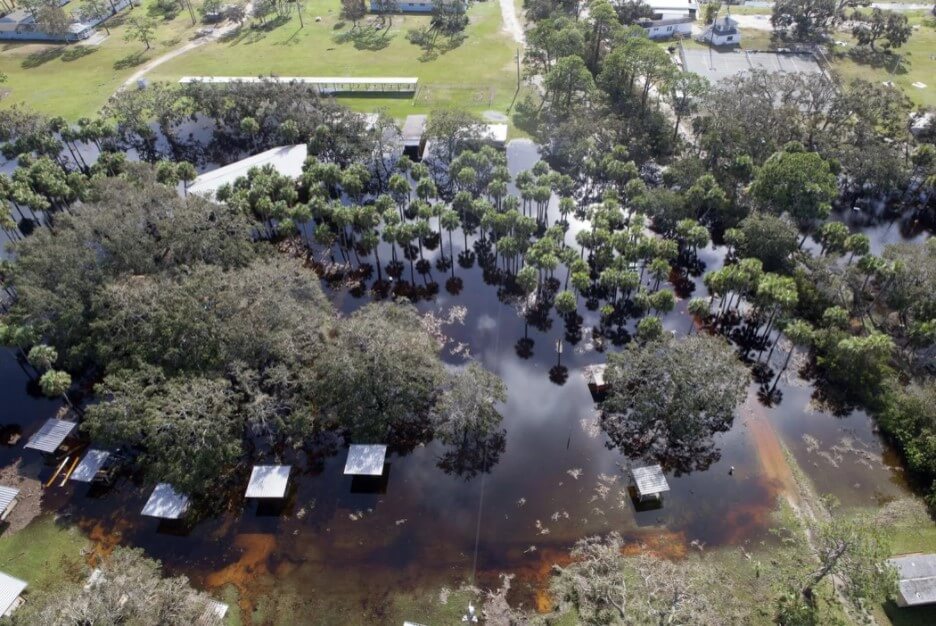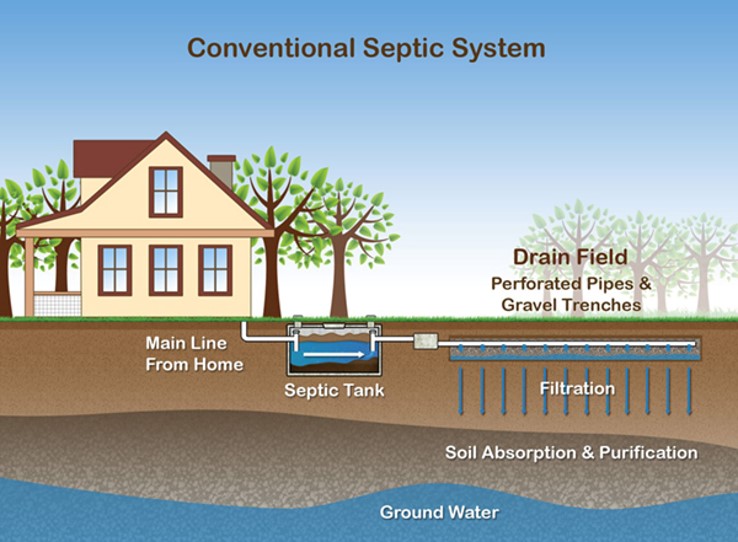About 30% of households in Florida rely on septic systems to treat and dispose of household wastewater. This includes all water from bathrooms and kitchens, and laundry machines.
Conventional septic systems are made up of a septic tank (a watertight container buried in the ground) and a drain field, or leach field. The septic tank’s job is to separate out solids (which settle on the bottom as sludge), from oils and grease, which float to the top and form a scum layer. Bacteria break down the solids (the organic matter) in the tank. The liquid wastewater or effluent, which is in the middle layer of the tank, flows out through pipes into the drain field and underlying soil, where most of the treatment takes placeDuring floods or heavy rains, the soil around the septic tank and in the drainfield become saturated, or water-logged, and the effluent from the septic tank can’t properly drain though the soil. Special care needs to be taken with your septic system during and after a flood or heavy rains.
What should you do after flooding occurs?
The U.S. Environmental Protection Agency (EPA) offers these guidelines:
- If your water supply comes from a private well, have it tested for bacteria (total coliform bacteria and E. coli) to make sure it’s safe for consumption, which includes drinking, brushing teeth and cooking. Contact your local County Health Department for testing information. Use an alternate water source or boil your water (bring it to a rolling boil for at least 1 minute) before using it.
- Relieve pressure on the septic system by using it less or not at all until floodwaters recede and the soil has drained. For your septic system to work properly, water needs to drain freely in the drainfield. Under flooded conditions, water can’t drain properly and can back up in your system. Remember that in most homes all water sent down the pipes goes into the septic system. Clean up floodwater in the house without dumping it into the sinks or toilet.
- Avoid digging around the septic tank and drainfield while the soil is water logged. Don’t drive heavy vehicles or equipment over the drainfield. By using heavy equipment or working under water-logged conditions, you can compact the soil in your drainfield, and water won’t be able to drain properly.
- Don’t open or pump out the septic tank if the soil is still saturated. Silt and mud can get into the tank if it is opened and can end up in the drainfield, reducing its drainage capability. Pumping under these conditions can cause a tank to pop out of the ground.
- If you suspect your system has been damage, have the tank inspected and serviced by a professional. How can you tell if your system is damaged? Signs include: settling, wastewater backs up into household drains, the soil in the drain field remains soggy and never fully drains, a foul odor persists around the tank and drain field.
- Keep rainwater drainage systems away from the septic drainfield. As a preventive measure, make sure that water from roof gutters doesn’t drain into your septic drainfield – this adds an additional source of water that the drainfield has to manage.
More information on septic systems and maintenance, can be found on the UF/IFAS septic system website.
By taking special care with your septic system after flooding, you can contribute to the health of your household, community and environment.
- What to Do if a Sinkhole Opens on Your Property? - June 6, 2025
- Workshop on Private Well and Septic System Basics - October 18, 2024
- Septic system maintenance after a flood - June 7, 2024


